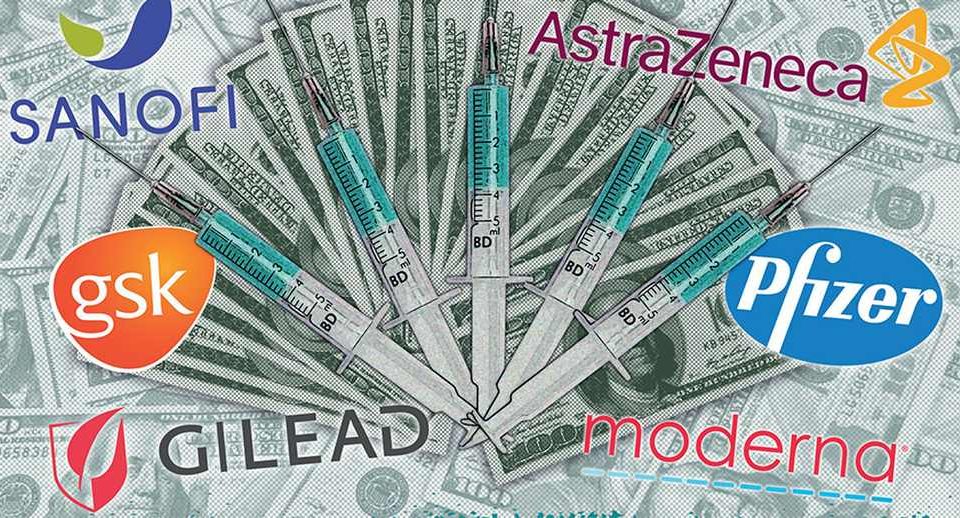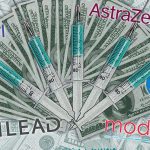Big Pharma spent $6 billion on lobbying politicians, lawmakers and government officials, JAMA Internal Medicine research found

In 2018, the United States spent an estimated $3.6 trillion, or 17.6% of its $20.5-trillion gross domestic product, on health care, including $345 billion on prescription drugs sold in retail pharmacies. However, since the coronavirus pandemic in early 2020, the pharmaceutical industry has been raking in billions of dollars in vaccine sales to the U.S. government.
Last month, Reuters published a piece titled, “Booster jabs are easy money for Pfizer and Moderna.” According to Reuters’ story, the U.S. Food and Drug Administration (FDA) authorized the third dose of their coronavirus vaccines for immunocompromised people which accounts for just about 3% of Americans.
Both companies will benefit from the new FDA authorization. However, as Reuters explained it, Moderna’s roughly $160 billion market capitalization depends on it more. In addition, both Pfizer and Moderna are expected to make a combined $50 billion this year.
You may be wondering how pharmaceutical companies are making massive profits. To truly understand how the pharmaceutical industry works, you have to go way back to over two decades ago. In the last 20 years, the pharmaceutical industry, also known as the pharma industrial complex, has spent at least $6 billion on lobbying our politicians and government officials at all levels of government including federal, state, and local.
A 2020 research published in JAMA Internal Medicine found that Big Pharma and “well-resourced drug industry groups” exert their considerable political influence through lobbying and campaign contributions to politicians. Oliver Wouters, a researcher from the London School of Economics, published research analyzing the lobbying expenditures and election contributions of pharmaceutical and health product industries.
Wouters found that from 1999 to 2018, the pharmaceutical and health product industry recorded $4.7 billion—an average of $233 million per year—in lobbying expenditures at the federal level alone, more than any other industry. As part of the research, Wouters used the data from the Center for Responsive Politics and the National Institute on Money in Politics, both of which are non-profit, non-partisan organizations that track federal and state campaign donations as well as lobbying expenditures.
Using the data from these two organizations, Wouters found that the pharmaceutical and health product industries spent a total of $4.7 billion on lobbying the federal government, $877 million on state candidates and committees, and $414 million on presidential and congressional electoral campaigns, national party committees, and outside spending groups between 1999-2018. His findings were published in JAMA Internal Medicine.
“When considering legislative and policy initiatives, Congress and the executive branch benefit from fully considering the interests of all parties in society, not just those who seek to improve their access to officials through campaign contributions and lobbying expenditures,” Wouters writes.
Of the 20 senators and 20 representatives who received the most contributions from the pharmaceutical and health product industry, Wouters found that 39 belonged to committees with jurisdiction over health-related legislative matters, 24 of them in senior positions.
He also found that a total of $64.3 billion was spent lobbying Congress and other federal agencies from 1999-2018, of which the pharmaceutical and health product industries spent the most: $4.7 billion, or 7.3% of total lobbying, for an average of $233 million per year.
Wouters concluded that from 1999 to 2018, the pharmaceutical and health product industry spent large sums of money on lobbying and campaign contributions to influence legislative and election outcomes. He added that the findings could inform discussions about how to temper the influence of industry on US health policy, especially during this pandemic period.
Below are the major highlights and key points of the research.
Question How much money did the pharmaceutical and health product industry spend on lobbying and campaign contributions in the US from 1999 to 2018?
Findings This observational study, which analyzed publicly available data on campaign contributions and lobbying in the US from 1999 to 2018, found that the pharmaceutical and health product industry spent $4.7 billion, an average of $233 million per year, on lobbying the US federal government; $414 million on contributions to presidential and congressional electoral candidates, national party committees, and outside spending groups; and $877 million on contributions to state candidates and committees. Contributions were targeted at senior legislators in Congress involved in drafting health care laws and state committees that opposed or supported key referenda on drug pricing and regulation.
Meaning An understanding of the large sums of money the pharmaceutical and health product industry spends on lobbying and campaign contributions can inform discussions about how to temper the influence of industry on US health policy.
Importance Government efforts to lower drug costs and other legislative and regulatory initiatives may be counteracted by campaign donors and lobbyists in the pharmaceutical and health product industry.
Objective To review how much money the pharmaceutical and health product industry spent on campaign contributions and lobbying in the US from 1999 to 2018 at the federal and state levels.
Design and Setting Analysis of federal-level and state-level data obtained from the Center for Responsive Politics and the National Institute on Money in Politics, respectively. These nonprofit, nonpartisan organizations track federal and state campaign contributions and lobbying expenditures by individuals and groups.
Exposures Lobbying expenditures and contributions to political campaigns.
Main Outcomes and Measures Total spending, inflation-adjusted to 2018 dollars using the US Consumer Price Index, on lobbying and campaign contributions by year, source, and state.
Results From 1999 to 2018, the pharmaceutical and health product industry recorded $4.7 billion—an average of $233 million per year—in lobbying expenditures at the federal level, more than any other industry. Of the spending, the trade group Pharmaceutical Research and Manufacturers of America accounted for $422 million (9.0%), and the other 19 top companies and organizations in this industry accounted for $2.2 billion (46.8%). The industry spent $414 million on contributions to candidates in presidential and congressional elections, national party committees, and outside spending groups. Of this amount, $22 million went to presidential candidates and $214 million went to congressional candidates. Of the 20 senators and 20 representatives who received the most contributions, 39 belonged to committees with jurisdiction over health-related legislative matters, 24 of them in senior positions. The industry contributed $877 million to state candidates and committees, of which $399 million (45.5%) went to recipients in California and $287 million (32.7%) went to recipients in 9 other states. In years in which key state referenda on reforms in drug pricing and regulation were being voted on, there were large spikes in contributions to groups that opposed or supported the reforms.
Conclusions and Relevance From 1999 to 2018, the pharmaceutical and health product industry spent large sums of money on lobbying and campaign contributions to influence legislative and election outcomes. These findings can inform discussions about how to temper the influence of industry on US health policy.
You can find the entire article here: https://jamanetwork.com/journals/jamainternalmedicine/fullarticle/2762509




